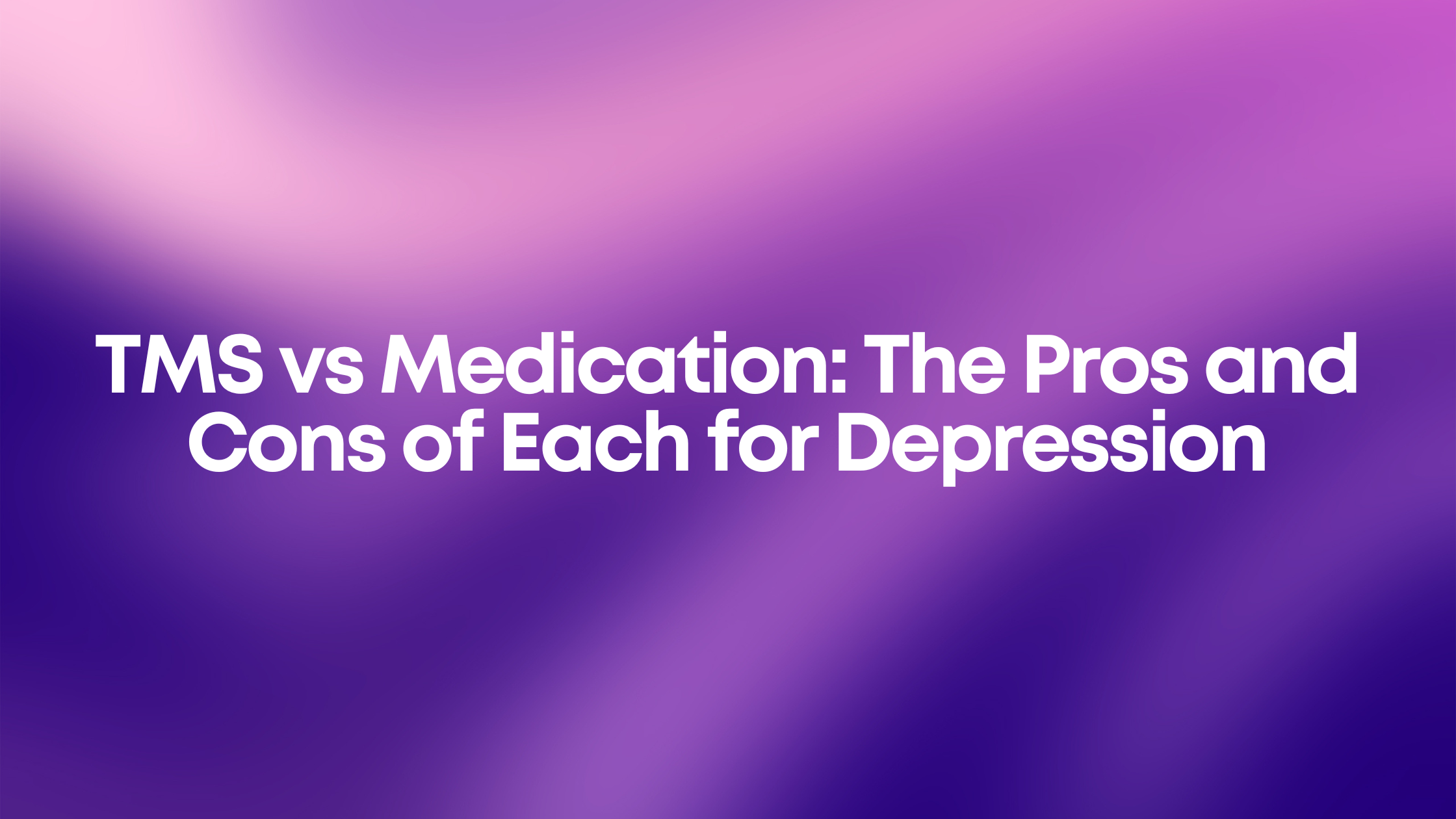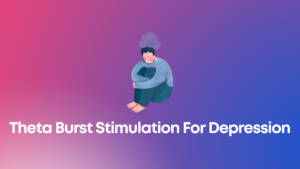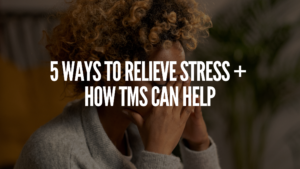Depression is a serious and often debilitating condition that impacts millions of people worldwide. While there are many treatment options available, two of the most common and effective are transcranial magnetic stimulation (TMS) and antidepressant medication. Both approaches have their own set of pros and cons to consider when deciding which may be right for an individual. This article provides an overview of TMS vs medication, and how TMS and medications work, as well as the potential benefits and downsides of each, to help those struggling with depression determine the best treatment path.
How TMS Works
TMS is a non-invasive therapy that uses electromagnetic pulses to stimulate nerve cells and alter activity in the brain. During a TMS session, a coil is placed against the scalp near the forehead. This coil painlessly delivers repetitive magnetic pulses, which pass through the skull and into the prefrontal cortex, the part of the brain involved in mood regulation. These pulses stimulate nerve cells and increase blood flow in targeted areas. Over a course of treatments, TMS can “rewire” brain circuits and provide lasting relief from depressive symptoms.
TMS is an FDA-cleared treatment for major depressive disorder in adults who have not responded to at least one antidepressant medication. It is also used for other conditions like anxiety, OCD, PTSD, and chronic pain. Treatments are administered 5 days a week for 4-6 weeks. Each session lasts about 20–40 minutes, with no recovery time needed. Patients can drive themselves home and resume normal activity right after.
Benefits of TMS
Some of the main advantages of TMS for depression include:
- Non-invasive and no anesthesia required
- Minimal side effects; mainly headaches and scalp discomfort during treatment
- Patients don’t need to take medication with significant side effects
- Quick sessions with no downtime afterwards
- More convenient than ECT (electroconvulsive therapy)
- Can provide relief within just 2-4 weeks
- Safe for those who haven’t improved with medications
- May be covered by insurance, including Medicare
Downsides of TMS
Some of the main disadvantages or downsides of TMS include:
- Daily sessions 5 days a week for 4-6 weeks can disrupt work/life schedule
- Requires repeated travel to and from TMS clinic site
- Does not work for every patient; about 50% see full remission of depression
- Risk of relapse or recurrence of symptoms later on
- Not yet approved for adolescents under 18 years old
- May not be covered by every insurance; copays can be expensive
- Long-term benefits still being researched; more data needed
How Antidepressants Work
Antidepressant medications are the other main medical treatment for depression. These drugs work by adjusting the levels of neurotransmitters like serotonin, norepinephrine, and dopamine in the brain. There are several classes of antidepressants that each act in slightly different ways, including SSRIs, SNRIs, and tricyclic antidepressants. These medications must be taken daily, often for at least 6–12 weeks, for full therapeutic effects to develop. Some patients end up taking antidepressants long-term to prevent depressive episodes from returning.
Benefits of Antidepressants
Some of the main pros of using antidepressant medication for depression:
- Often the first-line treatment recommended
- May begin improving symptoms within 2-4 weeks
- Do not require daily travel or sessions like TMS
- Covered by most insurance prescription plans
- Many different drug options to try
- Can maintain symptom relief with long-term use
- May be easier to access than TMS therapy
Downsides of Antidepressants
Some key cons or disadvantages of antidepressants include:
- Bothersome side effects like nausea, fatigue, weight gain, insomnia, etc.
- Need to take every day; easy to forget doses
- Trial and error to find the right drug and dosage
- Symptoms may come back if medication is stopped
- Can take 4-6 weeks to start working fully
- Drug interactions with other medications
- Difficulty tolerating side effects or withdrawing from some medications
- May not improve every depressive symptom for every patient
As this TMS vs medication overview demonstrates, both TMS and antidepressant medications have pros and cons to weigh when deciding which may be the right approach for managing depression. The most suitable option can depend on a number of individual factors, including symptom severity, treatment history, side effect tolerance, accessibility, and personal preference.
At PsyFi TMS, we offer Brainsway Deep TMS and Blossom TMS to help patients struggling with depression and other mental health conditions. Our compassionate team provides safe, non-invasive TMS therapy using advanced technology shown to stimulate nerve cells and reduce symptoms for many people who have not seen success with antidepressants alone.
If you or a loved one have treatment-resistant depression or are looking for an alternative to medications, contact us today at info@psyfitms.com to learn more about how TMS vs medication and how TMS could provide relief. TMS has given hope to so many who felt like they had run out of options – let us help you reclaim your mental health and start feeling like yourself again. The road to recovery starts here.



